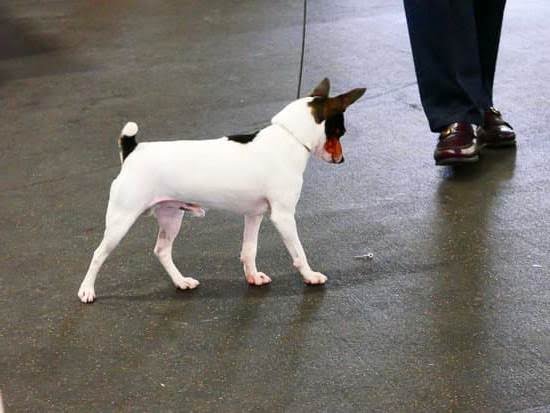Are you wondering how to train your dog to give her paw? Teaching your dog tricks, such as giving her paw, is not only a fun and impressive skill but it also strengthens the bond between you and your furry companion. In this article, we will guide you through the process of teaching your dog to give her paw, from understanding your dog’s behavior to troubleshooting common issues and celebrating success.
Understanding your dog’s behavior is crucial when it comes to training. Some dogs may struggle with paw training due to various reasons such as fear, lack of motivation, or discomfort. By learning about your dog’s behavior and body language, you can tailor your training approach to suit her needs and ensure a positive learning experience.
Before beginning paw training, it is important to gather essential tools and treats that will aid in the process. Positive reinforcement through treats plays a significant role in motivating your dog to learn new tricks. With the right preparation, you can set the stage for a successful paw training session with your furry friend.
Understanding Your Dog’s Behavior
Dogs are intelligent and capable of learning a wide range of tricks and commands. However, not all dogs take to training in the same way. When it comes to teaching your dog to give her paw, it’s important to understand that some dogs may struggle with this particular command for a variety of reasons.
One common reason why some dogs may have difficulty with paw training is that they are not comfortable with having their paws handled. This can be due to a lack of early socialization or past negative experiences with having their paws touched. Additionally, some dogs may simply be less inclined to engage in behaviors that involve physical contact, such as giving their paw.
It’s also important to consider the breed and individual personality of your dog when it comes to paw training. Some breeds are known for being more independent and less eager to please, while others are naturally more affectionate and inclined to engage in physical interactions with their owners. Understanding your dog’s unique personality can help you tailor your training approach to better suit her needs and preferences.
To address these challenges, it’s essential to approach paw training with patience, understanding, and positive reinforcement. By gradually desensitizing your dog to having her paws handled and making the training process enjoyable through the use of treats and praise, you can help her overcome any initial resistance and build a positive association with giving her paw.
As we explore how to train your dog give her paw keep this in mind as you work with her on this particular command.
Preparing for Paw Training
When it comes to teaching your dog the “paw” command, preparation is key. Gathering essential tools and high-quality treats will help set the stage for successful training sessions. Here’s how to get ready for paw training:
First, it’s important to have the right tools on hand. You’ll need a comfortable and distraction-free space to train your dog. This could be a quiet room in your home or a familiar outdoor area. Additionally, having a clicker or using a verbal marker like “yes” will help communicate the exact moment your dog performs the desired behavior.
In addition to tools, having the right treats is crucial for motivating your dog during training. High-value treats such as small pieces of cooked chicken, cheese, or freeze-dried liver are often irresistible to dogs and can be used as rewards for successfully completing the “paw” command. It’s also helpful to break these treats into small, pea-sized pieces to prevent overfeeding during training sessions.
Lastly, always make sure that both you and your dog are in the right mindset when beginning paw training. Choose a time when your dog is alert and focused, and when you’re feeling calm and patient. Training should be a positive experience for both you and your dog, so creating an environment of patience and understanding will pave the way for success in teaching your dog to give her paw.
| Tools | Treats |
|---|---|
| Comfortable space | High-value treats (cooked chicken, cheese, freeze-dried liver) |
| Clicker or verbal marker | Small, pea-sized treat pieces |
Step-by-Step Paw Training
Training your dog to give her paw is not only a fun trick, but it also promotes bonding and strengthens the communication between you and your four-legged friend. It is important to begin with the right approach when teaching this trick to ensure that your dog understands what is expected of her. Here’s how to start the paw training process.
First, gather essential tools such as treats that your dog loves and a quiet, distraction-free environment where you can focus on training. Positive reinforcement is key when training your dog, so make sure to have plenty of rewards on hand.
To begin paw training, start with a treat in your closed fist and present it to your dog at nose level. When she starts to show interest in the treat and paws at it or even lifts her foot slightly, immediately reward her with praise and the treat. Repeat this step several times until she consistently reaches for or paws at your hand.
Next, introduce the “paw” command by saying the word “paw” or “shake” as she reaches for your hand. Pairing a verbal cue with the action will help her associate the word with lifting her paw.
Once your dog is consistently offering her paw in response to the verbal cue, gradually phase out the use of treats and only reward her intermittently. This will reinforce her understanding of the command while also preventing over-reliance on treats for motivation.
Using this step-by-step approach will help you successfully train your dog to give her paw while strengthening your bond through positive reinforcement and patience.
| Essential Tools | Benefits of Paw Training |
|---|---|
| Treats | Promotes bonding and communication |
| Quiet Environment | Strengthens obedience and mental stimulation |
Troubleshooting Common Issues
Identifying the Root of Resistance
Some dogs may show resistance to paw training due to various reasons such as fear, lack of interest, or even physical discomfort. It is important to identify the root cause of your dog’s resistance before addressing it. If your dog is fearful, patience and positive reinforcement are key in helping her feel more comfortable. On the other hand, if your dog seems disinterested, you may need to adjust your training approach or find more enticing treats.
Patience and Persistence
When encountering resistance from your dog during paw training, it’s crucial to remain patient and persistent. Keep in mind that every dog learns at her own pace and pushing too hard can lead to frustration for both you and your pet. Take breaks when necessary and always end each training session on a positive note to keep the experience enjoyable for your dog.
Seeking Professional Assistance
If you find yourself continuously struggling with overcoming resistance during paw training despite trying different approaches, seeking professional assistance from a certified dog trainer may be beneficial. A professional can provide personalized guidance and techniques tailored to address the specific challenges you are facing with your dog. Remember that it’s okay to ask for help when needed in order to ensure a positive and successful learning experience for both you and your furry companion.
Reinforcing the Paw Command
When it comes to reinforcing the paw command with your dog, consistency and positive reinforcement are key. Once your dog has learned the basic concept of giving her paw, it’s important to continue practicing and reinforcing this behavior on a regular basis.
Consistency Is Key
Consistency is essential when reinforcing the paw command with your dog. This means consistently using the same verbal cue or hand signal for the paw command, and consistently rewarding your dog when she successfully gives her paw. Make sure that everyone in the household uses the same cues and rewards to prevent confusion for your dog.
Positive Reinforcement
Positive reinforcement is a powerful tool when it comes to training your dog. Every time your dog gives her paw on command, be sure to offer plenty of praise and a delicious treat as a reward. Positive reinforcement helps to strengthen the bond between you and your dog, making training a positive and enjoyable experience for both of you.
Progressive Challenges
As your dog becomes more consistent with giving her paw, you can gradually increase the difficulty of the task by introducing new challenges. For example, you can ask your dog to give her paw while standing on different surfaces or in different environments. These progressive challenges help to reinforce the behavior and keep your dog engaged in training.
By remaining consistent and using positive reinforcement, you can reinforce the paw command with your dog effectively. Remember that every dog learns at their own pace, so be patient and continue to provide encouragement as you reinforce this fun trick with your furry companion.
Taking Paw Training to the Next Level
Once your dog has mastered the basic paw command, you can take their training to the next level by incorporating variations and challenges. This will not only improve their skills but also provide mental stimulation and strengthen the bond between you and your furry friend. Here are some ideas for taking paw training to the next level:
- Double Paw: Once your dog is reliably giving one paw, you can teach them to give both paws on command. This can be a fun and impressive trick that will surely impress your friends and family.
- High Five: Teaching your dog to give a high five is a variation of the paw command that adds a playful twist to their training. By raising your hand higher, you can encourage your dog to reach up and “high five” you with their paw.
Challenges can push your dog’s abilities even further, so try incorporating these into their training:
- Distance: Start by asking for the paw command at a close distance, then gradually increase the distance between you and your dog. This will test their understanding of the command and their focus on you.
- Distractions: Introduce distractions such as other people, animals, or noises while practicing the paw command. This will help your dog learn to focus on you despite external stimuli.
By incorporating variations and challenges into your dog’s training, you can keep their skills sharp while providing them with new experiences and bonding opportunities.
Remember, patience and consistency are key when taking paw training to the next level. Celebrate each small success along the way, and always use positive reinforcement to encourage your furry friend’s progress. With dedication and practice, your dog will continue to grow and thrive in their training journey.
Celebrating Success
Now that your dog has mastered the art of giving her paw, it’s time to celebrate her success and continue bonding through training games. Here are some fun and interactive ways to showcase your dog’s new skill and strengthen the bond between the two of you:
1. High-Five: Once your dog has mastered giving her paw, take it a step further by teaching her to give a high-five. Hold out your hand and encourage her to touch it with her paw. When she does, be sure to reward her with plenty of praise and treats.
2. Simon Says: Play a game of “Simon Says” with your dog using the paw command. Give the command “paw” or “shake” and see if your dog responds correctly. This not only reinforces the paw command but also adds an element of fun and mental stimulation for your furry friend.
3. Paw Targeting: Take the training up a notch by teaching your dog to target specific objects with her paw. Place a target, such as a small plastic lid or mat, on the ground and encourage your dog to touch it with her paw. This can be a great way to introduce new commands and engage your dog in more advanced training exercises.
4. Paw Relay Race: Create a fun relay race where you and other family members stand at certain distances from each other, each holding out a hand for your dog to give her paw. As she successfully gives each person her paw, she can move on to the next until she reaches the finish line where there’s an extra special treat waiting for her.
By incorporating these training games into your routine, you can continue to reinforce the paw command while also strengthening the bond between you and your furry companion. Remember to always use positive reinforcement, patience, and consistency in all training activities with your dog.
Conclusion
In conclusion, teaching your dog to give her paw is not just about performing a cute trick; it’s about building a stronger bond with your furry friend and enhancing her overall well-being and happiness. Training your dog provides mental stimulation, boosts her confidence, and strengthens the trust between the two of you.
When you invest time and effort into teaching your dog new skills, you are showing her that she is a valued member of the family, which can contribute to her overall happiness.
By understanding your dog’s behavior and patiently working through any struggles she may have with paw training, you are demonstrating empathy and compassion towards her. This process allows you to develop a deeper understanding of your dog’s needs and preferences, leading to a more harmonious relationship. Additionally, consistent training and positive reinforcement promote a sense of accomplishment for your dog as she learns new skills, ultimately leading to increased confidence and contentment.
As you continue to reinforce the paw command with consistency and positivity, be sure to celebrate each small success along the way. Whether it’s incorporating variations or challenges into her training or showcasing her new skill in training games, acknowledging her progress will further solidify the bond between you both while boosting her overall well-being.
Remember that training is an ongoing journey that contributes to your dog’s physical and mental health, fostering a fulfilling life for both of you. So take the time to train your dog – it’s worth it for everyone involved.

Welcome to the blog! I am a professional dog trainer and have been working with dogs for many years. In this blog, I will be discussing various topics related to dog training, including tips, tricks, and advice. I hope you find this information helpful and informative. Thanks for reading!





